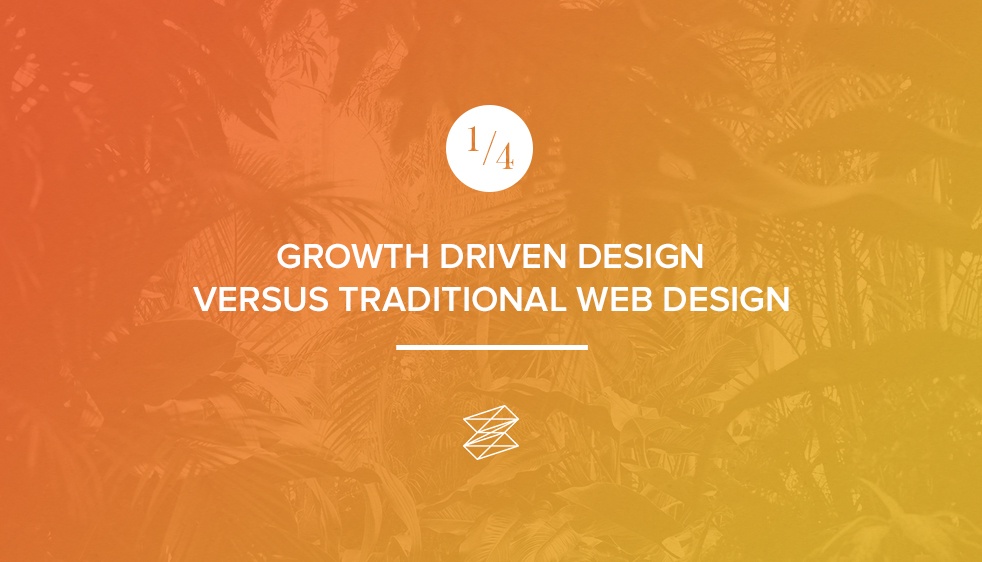
Curious about the difference between growth driven design and traditional web design? Proponents of growth driven design want you to know that it is a flexible new method for building websites that reduces the risks and costs typical of traditional design. For instance, it reduces the chances of running over budget, past the deadline and failing to meet goals by keeping the design process open ended.
Traditional Web Design Traditional web design relies heavily on practices and trends that have worked in the past. Traditional design practices often use assumptions about what will get the best results without any supporting data. The cost of traditional web design is significantly higher up front, and the time and energy required to develop a traditional site can be very draining on any organization. The problem is that once you build a static site based on old trends, it stays put for the next few years while the rest of the web moves on, and you can't make changes without spending even more.
Growth Driven Design Growth driven design is a more linear approach to the web design process, allowing the site to be built in smaller stages, each with their own goals, and supporting metrics. This allows you to analyze your site's performance based on actual customer activity, and introduce changes one at a time as you learn. This process obviously mitigates the risks of building a site because you are using real feedback to improve your results every step of the way. In addition, since the project is a living thing, your costs are spread out over the life of the design process rather than coming all at once. This keeps you from being tied to old trends and allows your team to make more educated decisions about marketing and sales based on changing tides.
Strategy For the purposes of growth driven design, most developers use a two phase strategy. In the first phase you will be asked to create a wishlist of all the things you want your site to do for you, typically ranging from 75-200 items, which will be prioritized. From there, analysis and research will be done to determine the best way to achieve each goal. This includes analysis of competitor sites, common keywords, and more. Then your designers will put together a "launchpad" site. This launchpad is basically the foundation or bone structure upon which all of your other wishes will be built. Phase two of the growth driven design process includes planning, further development, learning and integration. Once the launchpad site is live, a continuous phase two cycle begins. You will start planning your next update based on your wishlist and priorities. It is important to remember that these can change based upon what you have learned from your site along the way. Then new features and functions will be added to your site by your developers. You will have the opportunity to analyze the changes and determine what worked and what didn't. Lastly, once you know what worked, you can begin integrating those same principals throughout your marketing efforts, not just online. This includes changing graphics, participating in social media, or whatever else you may discover. This process repeats over and over as your site continues to evolve. It is easy to see why growth driven design has taken the marketing world by storm. It adds significant value for companies who can not risk a huge expenditure on outdated web design practices. To learn more about how GDD can bring your company up to date, talk with a specialist today!

